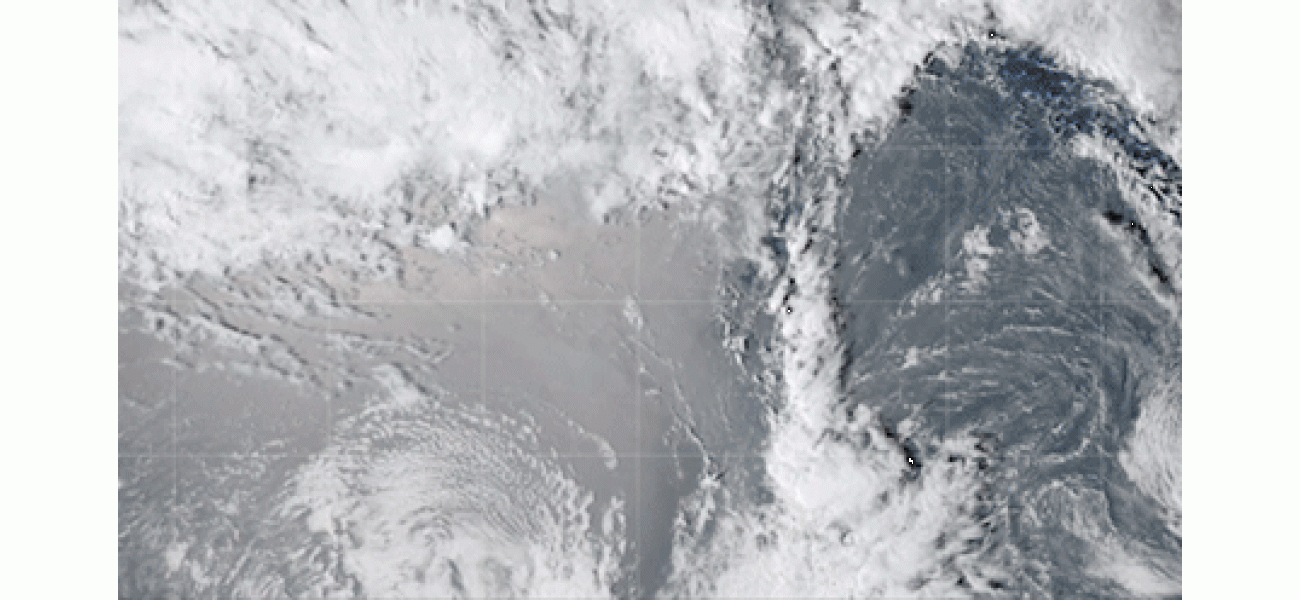Minutes before a massive eruption, something strange occurred.
We hadn't considered using this type of analysis in real-time.
November 22nd 2024.

The news of the massive explosion that rocked the Pacific island of Tonga in January 2022 was shocking to say the least. The eruption of the Hunga Tonga-Hunga Ha'apai underwater volcano was so powerful that it was said to be equivalent to hundreds of atomic bombs. The island was engulfed in a thick cloud of gas and ash, causing a deadly tsunami to hit the capital city of Nuku'alofa. The aftermath of this natural disaster was devastating, with large parts of Tonga being swallowed up by the sea.
However, before the eruption occurred, there was a strange signal that caught the attention of researchers. Just 15 minutes before the explosion, two monitoring stations far away from the island recorded a seismic wave. This was later determined to be a precursor to the eruption, as the weak section of the ocean floor below the volcano collapsed, causing the water to rush in and come into contact with the superhot magma. This created a Rayleigh wave, which is an acoustic wave that causes the ground to roll, similar to the motion of someone layering on bedsheets.
Lead author Takuro Horiuchi, a graduate student at the University of Tokyo, explained that this type of seismic activity is often a warning sign of an impending eruption. However, it is usually only detected within a few kilometers of the volcano. In this case, the Rayleigh wave was felt hundreds of kilometers away, showcasing just how strong the precursor was. Co-author Mie Ichihara, a volcanologist also from the University of Tokyo, emphasized the importance of early warnings in disaster mitigation and how this type of analysis could potentially save lives in the future.
The significance of this discovery lies in the fact that volcanic eruptions often have a lot of underground activity leading up to them, and being able to detect even the tiniest movements can be crucial in predicting and preparing for an eruption. The eruption of Hunga Tonga-Hunga Ha'apai in December 2021 was a prime example of this, as there were already signs of activity happening beneath the surface. The fact that this can all happen out of sight, leaving many questions about the mechanics of geological processes, only adds to the importance of understanding and being able to detect these warning signs.
The eruption itself only lasted for about 10 minutes, but its impact was felt far and wide. The sound of the explosion was so loud that it could be heard from over 1,100 miles away in New Zealand, and the shock wave reached a staggering 60 miles high in the upper atmosphere. The towering ash cloud that was produced reached a record-breaking 35 miles high, and the amount of sulfur dioxide and water vapor released was also immense.
The aftermath of the eruption was devastating, with tsunamis reaching as far as the Atlantic, Caribbean, and Mediterranean. The death toll was tragically high, with four people in Tonga and two in Peru losing their lives. The eruption also caused significant damage to the island itself, with only small parts of Hunga Tonga and Hunga Ha'apai remaining.
In conclusion, the eruption of Hunga Tonga-Hunga Ha'apai was a catastrophic event that had a major impact on both the island of Tonga and the world. The discovery of the seismic precursor just moments before the eruption sheds light on the importance of monitoring and understanding volcanic activity, in order to better prepare and potentially save lives in the future.
However, before the eruption occurred, there was a strange signal that caught the attention of researchers. Just 15 minutes before the explosion, two monitoring stations far away from the island recorded a seismic wave. This was later determined to be a precursor to the eruption, as the weak section of the ocean floor below the volcano collapsed, causing the water to rush in and come into contact with the superhot magma. This created a Rayleigh wave, which is an acoustic wave that causes the ground to roll, similar to the motion of someone layering on bedsheets.
Lead author Takuro Horiuchi, a graduate student at the University of Tokyo, explained that this type of seismic activity is often a warning sign of an impending eruption. However, it is usually only detected within a few kilometers of the volcano. In this case, the Rayleigh wave was felt hundreds of kilometers away, showcasing just how strong the precursor was. Co-author Mie Ichihara, a volcanologist also from the University of Tokyo, emphasized the importance of early warnings in disaster mitigation and how this type of analysis could potentially save lives in the future.
The significance of this discovery lies in the fact that volcanic eruptions often have a lot of underground activity leading up to them, and being able to detect even the tiniest movements can be crucial in predicting and preparing for an eruption. The eruption of Hunga Tonga-Hunga Ha'apai in December 2021 was a prime example of this, as there were already signs of activity happening beneath the surface. The fact that this can all happen out of sight, leaving many questions about the mechanics of geological processes, only adds to the importance of understanding and being able to detect these warning signs.
The eruption itself only lasted for about 10 minutes, but its impact was felt far and wide. The sound of the explosion was so loud that it could be heard from over 1,100 miles away in New Zealand, and the shock wave reached a staggering 60 miles high in the upper atmosphere. The towering ash cloud that was produced reached a record-breaking 35 miles high, and the amount of sulfur dioxide and water vapor released was also immense.
The aftermath of the eruption was devastating, with tsunamis reaching as far as the Atlantic, Caribbean, and Mediterranean. The death toll was tragically high, with four people in Tonga and two in Peru losing their lives. The eruption also caused significant damage to the island itself, with only small parts of Hunga Tonga and Hunga Ha'apai remaining.
In conclusion, the eruption of Hunga Tonga-Hunga Ha'apai was a catastrophic event that had a major impact on both the island of Tonga and the world. The discovery of the seismic precursor just moments before the eruption sheds light on the importance of monitoring and understanding volcanic activity, in order to better prepare and potentially save lives in the future.
[This article has been trending online recently and has been generated with AI. Your feed is customized.]
[Generative AI is experimental.]
0
0
Submit Comment





